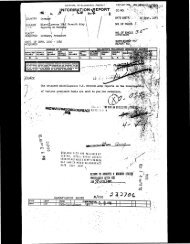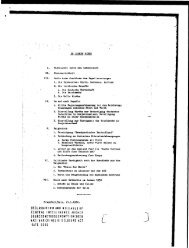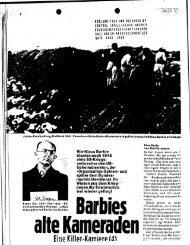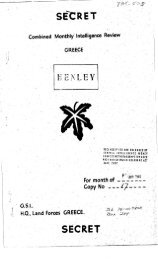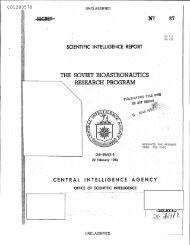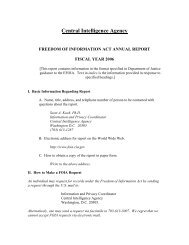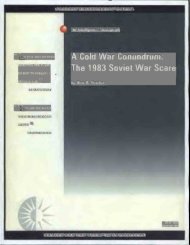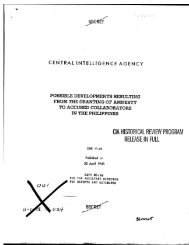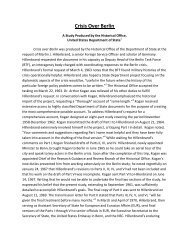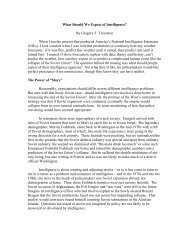RIO 1055 .U51 S-E -C -R--L--T U.S. Army. European Command ...
RIO 1055 .U51 S-E -C -R--L--T U.S. Army. European Command ...
RIO 1055 .U51 S-E -C -R--L--T U.S. Army. European Command ...
You also want an ePaper? Increase the reach of your titles
YUMPU automatically turns print PDFs into web optimized ePapers that Google loves.
2i. The Abwehr in South East Europe.<br />
A. Introduction.<br />
The necessity for a change from stationary ASTs to mobile FATE<br />
first became apparent in the USSR. These new units were no longer under<br />
the direct control of the Abwehr and 00 but instead were attached to<br />
armies or an army group. In this manner the intelligence chief was to<br />
control the operational, financial and disciplinary functions of the<br />
units, while Abwehr headquarters in BERLIN was to decide only on matters<br />
of general policy. This dual regime caused many difficulties since both<br />
the Abwehr and intelligence chiefs jealously guarded their authority,<br />
which had never been properly defined in the first place, and issued<br />
contradictory orders to the Trupps under their command. The actual chain<br />
of command depends entirely on the personalities of the leaders and their<br />
respective influence and popularity with higher headquarters. The intelligence<br />
chief for instance, would decide where and how the various Trupps<br />
were to be employed, but if the Abwehr in BERLIN did not agree it could<br />
withdraw it to another army. The intelligence chief would then protest thist<br />
ddaision to the OKH and the final decision would favor the more popular<br />
group.<br />
b. Struggle for Power.<br />
It is clear that under these conditions, friendships or personal<br />
animosity very often decided the course of operations. People who disliked<br />
each other were more interested in fighting their own little wars than in<br />
fighting the enemy. Reorganizations became daily routine and efficiency<br />
lessened continually. Matters were further complitsated by the constant<br />
struggle between the Abmehr and .the SS, with the latter steadily gaining<br />
the upper hand. Their hostile relationships were likely to produce the<br />
following results.<br />
The Abwehr, hotly attadbed by the SS because of its political<br />
unreliability and general inefficiency, would be split into various groups<br />
which were busily fighting each other and covertly trying to gain more power.<br />
The intelligence chief felt that he was the sole authority in matters pertaining<br />
to the Abmehr in combat areas. The FAN tried to dominate its respective<br />
FATs, and the subsequently-formed Leit Stellen started issuing<br />
orders and directives which nobody was willing to execute. Meanwhile Abwehr<br />
headquarters, which had authority over all these units, found itself either<br />
uninformed or misinformed about happenings and its directives misinterpreted<br />
or disregarded entirely. Theoretically a FAX was controlled by:<br />
(1) The intelligence chief of an army group.<br />
(2) Abwehr Headquarters in BERLIN.<br />
(3) The Leit Stellen.<br />
SEtRET 1 0 c



